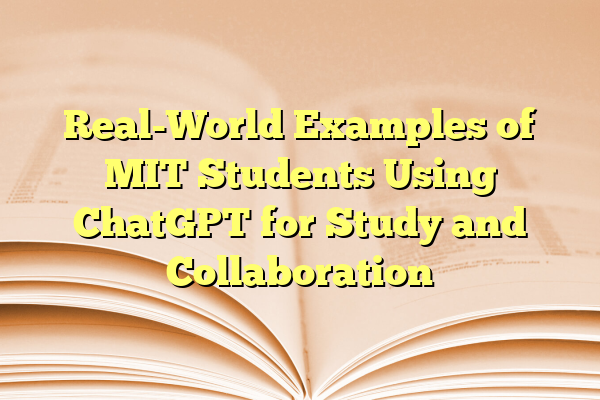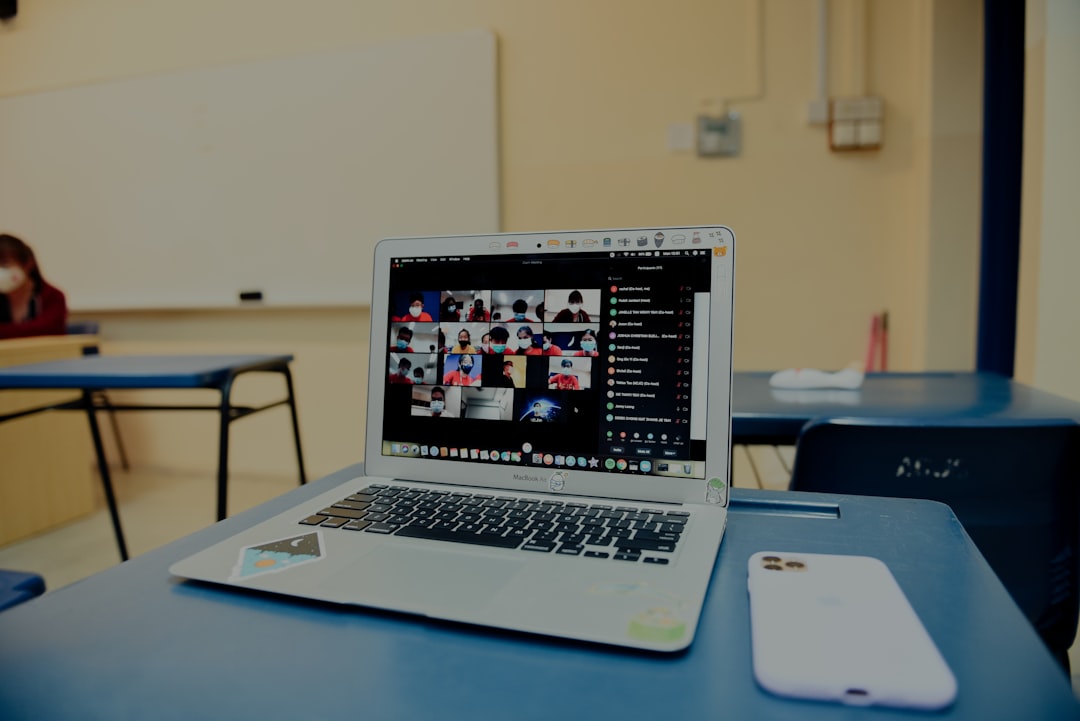
Real-World Examples of MIT Students Using ChatGPT for Study and Collaboration
At MIT, students are known for their creativity, innovation, and love of technology. So it’s no surprise that many MIT students are using ChatGPT as part of their daily study routines. From big projects to small homework problems, ChatGPT is helping these students brainstorm, learn, and collaborate like never before.
Let’s take a peek into how real students are using ChatGPT to level up their academic game. You might be surprised by how fun and helpful an AI study buddy can be!
Contents
1. Coding with Confidence
Meet Sam, a sophomore studying Computer Science. Sam often gets stuck debugging tricky functions or understanding obscure algorithms. Instead of sitting for hours trying to figure it out, he opens ChatGPT and types in a quick question like:
- “What does this error message mean?”
- “Can you explain quicksort in simple terms?”
- “Help me optimize this Python loop.”
ChatGPT responds like a smart friend who never sleeps. It not only gives him answers, but also explains the why behind the concepts. This helps Sam truly understand the code, not just copy and paste.

Over time, Sam has learned to code more cleanly and solve problems faster. He says ChatGPT acts like his “mini code consultant.”
2. Group Projects on a Whole New Level
Group work at MIT can be intense. Deadlines are tight, and team members are busy with other classes. Jane and her team were building a robot for a mechanical engineering class. They used ChatGPT like a team assistant.
Here’s how:
- Brainstormed design ideas
- Wrote outlines for team reports
- Double-checked calculations
- Translated technical jargon into plain English for presentations
When the team hit a wall while deciding between two designs, ChatGPT provided a pros and cons list for each. It even suggested questions they could ask their professor.
Jane says, “ChatGPT helped us move faster by taking care of the little things so we could focus on building.”
3. Tutoring Without the Wait
Sometimes, tutoring centers are full, or office hours don’t fit a student’s schedule. That’s where ChatGPT steps in. It’s available 24/7, with answers in seconds.
Mark, an aerospace engineering student, needed help understanding a fluid dynamics concept. He says:
“I was really struggling to follow the derivation in the textbook. I asked ChatGPT to ‘explain Reynolds number like I’m five.’ It totally clicked.”
After that, he used it for:
- Practice problems
- Concept explanations
- Proof reading lab reports

It was like having a genius TA in his pocket, whenever he needed help.
4. Writing with a Sidekick
MIT isn’t all math and science. Students often take writing and humanities classes too. For Anna, an electrical engineering major, writing wasn’t her strength. So she used ChatGPT to help organize her thoughts.
For one essay, she asked:
- “Can you help outline an essay on the future of AI and ethics?”
- “Suggest a thesis for this topic.”
ChatGPT gave her ideas. She still did all the real writing, but having guidance made the whole process smoother. It even helped her spot grammar issues before she turned in her drafts.
She says, “I felt more confident expressing my ideas. ChatGPT helped me find the right words.”
5. Prepping for Exams
Exams can be tough. Many students use flashcards or form study groups. At MIT, some students add ChatGPT to the mix.
Danny and his friends use ChatGPT for:
- Generating custom quizzes
- Explaining formulas
- Summarizing chapters
They ask things like:
- “Give me 5 practice problems on thermodynamics with answers.”
- “Explain Newton’s Laws using real-life examples.”
They even review the responses together so they can debate, correct, or dig deeper.
Danny calls it their AI-powered study jam.
6. Language Help for International Students
With students from all over the world, English isn’t everyone’s first language at MIT. Sofia, who’s from Brazil, uses ChatGPT to help with English vocabulary, grammar, and pronunciation tips.
She says:
“I use it to phrase emails, fix my grammar, and practice for interviews. It’s been a huge help.”
By copying an email draft into ChatGPT and asking “Does this sound professional?”, she gets quick, clear feedback. It’s a big confidence booster when giving presentations or applying for internships.
7. Idea Generation on Steroids
Need to come up with a cool research topic, startup idea, or science fair project? Many MIT students use ChatGPT for creative brainstorming.
Eric, a first-year student interested in climate tech, started with just a question:
- “What are emerging technologies to reduce ocean plastic?”
Within minutes, he had a list of ideas, pros and cons, and links he could explore further.
He ended up drafting a proposal with ChatGPT’s help and submitting it to a research incubator.

He says, “Sometimes I just need that initial spark. ChatGPT lights the match.”
So, What Makes It Work?
Students say the key is knowing how to ask good questions. ChatGPT isn’t magic—it needs clear prompts to give useful answers.
Some pro tips shared by students:
- Be specific in your questions
- Use follow-ups to dig deeper
- Verify important facts from textbooks or professors
Also, students know ChatGPT doesn’t replace learning. It supports learning. It helps explain, summarize, and guide—not do all the work.
The Takeaway
MIT students are finding smart ways to use AI tools like ChatGPT to reduce stress, boost creativity, and stay ahead in their studies. Whether it’s coding, writing, brainstorming, or team collaboration, ChatGPT is like an extra teammate that’s always there to help.
As long as it’s used responsibly and ethically, ChatGPT can turn study time into a smarter, more interactive experience—making learning not just easier, but a bit more fun too.
And if these tech-savvy students can do it, so can you!
